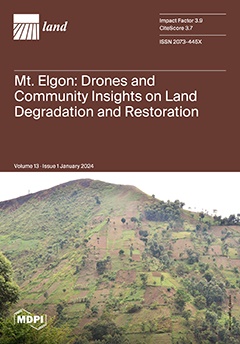Ver ítem
- xmlui.general.dspace_homeCentros Regionales y EEAsCentro Regional Patagonia SurEEA Santa CruzArtículos científicosxmlui.ArtifactBrowser.ItemViewer.trail
- Inicio
- Centros Regionales y EEAs
- Centro Regional Patagonia Sur
- EEA Santa Cruz
- Artículos científicos
- Ver ítem
Anthropogenic Impacts Allowed for the Invasion of Understory Species, Affecting the Sustainability of Management Practices in Southern Patagonia
Resumen
Forest management aims to preserve integrity and ecosystem resilience. Conservation and species invasion patterns must be determined in managed landscapes. The objectives of this study were to identify proxies that allowed plant species invasion (natives and exotics) and define thresholds of human impacts to improve management. We also wanted to identify indicator species for different impacts and environments. A total of 165 plots were measured in
[ver mas...]
Forest management aims to preserve integrity and ecosystem resilience. Conservation and species invasion patterns must be determined in managed landscapes. The objectives of this study were to identify proxies that allowed plant species invasion (natives and exotics) and define thresholds of human impacts to improve management. We also wanted to identify indicator species for different impacts and environments. A total of 165 plots were measured in Nothofagus antarctica forests and associated open lands (dry and wet grasslands) in Tierra del Fuego (Argentina). We found differences in the studied variables across the landscape and among different uses and impacts. Human impacts influence land types, emphasizing the importance of managing intensities. Indicator plant species allowed for the identification of potential ecological thresholds related to human impacts and the establishment of species linked to ecological and economic degradation, e.g., Bolax gummifera and Azorella trifurcata (cushion plants) were associated with high grazing pressure in grasslands and fires in forested areas, while Rumex acetosella and Achillea millefolium (erect herbs), typically associated with forested areas, were related to high harvesting pressures and fire impacts. These findings contribute to our understanding of the long-term effects of some human impacts (e.g., harvesting and ranching) and allow us to define variables of monitoring and indicator species for each impact type.
[Cerrar]

Autor
Rosas, Yamina Micaela;
Peri, Pablo Luis;
Cellini, Juan Manuel;
Lencinas, María Vanessa;
Kepfer-Rojas, Sebastian;
Kappel Schmidt, Inger;
Pechar, Sebastián;
Barrera, Marcelo Daniel;
Martínez Pastur, Guillermo José;
Fuente
Land 13 : 102 (January 2024)
Fecha
2024-01-16
Editorial
MDPI
ISSN
2073-445X
Formato
pdf
Tipo de documento
artículo
Palabras Claves
Derechos de acceso
Abierto
 Excepto donde se diga explicitamente, este item se publica bajo la siguiente descripción: Creative Commons Attribution-NonCommercial-ShareAlike 2.5 Unported (CC BY-NC-SA 2.5)
Excepto donde se diga explicitamente, este item se publica bajo la siguiente descripción: Creative Commons Attribution-NonCommercial-ShareAlike 2.5 Unported (CC BY-NC-SA 2.5)


